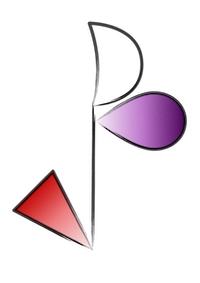Playing an instrument requires lots of repetitive movements. Because of this, many musicians struggle with muscle pain and injuries. How does this affect their life? Some answers can be found in a study by physiotherapist and Performing Arts Medicine specialist, Irem Eliassen. This study — based on a survey from the Norwegian Defence Research Establishment (FFI) on Norwegian orchestra musicians' conditions — looks at how musicians' physical pain correlates with their mental health and sleep quality.

Physical pain
305 of 358 musicians in eight Norwegian civil orchestras had experienced physical pain during the last 30 days.


TRIO OF AGONY
PHYSICAL PAIN, MENTAL HEALTH, SLEEP QUALITY
We can certainly appreciate that physical pain makes an orchestra members's work more difficult! But does physical pain also affect the mental health and sleep quality of our musicians?
This "Trio Graph" shows us an overview of how Irem Eliassen's study answers this question. We can see that musicians who experience physical pain have both more mental health issues and poorer sleep quality than musicians without pain. This is especially true for those musicians who replied "heavily bothered" on the FFI pain questions: this group's mental health score is above the limit for anxitety/depression. Similarly, we can see that musicians with pain — especially those who are heavily bothered — don't sleep as well as musicians without pain.





i The four different "pain areas" are: Lower back — Upper back, neck, shoulders — Arms, wrists, hands — Hips, legs, knees, feet.
i HSCL-25 (Hopkins Symptom Check List) is a standardised test to assess anxiety and depression.
i BIS (Bergen Insomnia Scale) is a standardised test to assess insomnia symptoms. The BIS symbols show the summary of six questions here. Max possible score is 42 (6 questions * 7 days).
i The symbols show mean (average) score within each pain area. See below for a breakdown of the HSCL-25 and BIS tests!

Physical pain & mental health
In the HSCL-25 test, musicians were asked to rate how they felt on 25 questions.
Let's look at the numbers behind each of the 25 questions! We can see that musicians with pain (coloured symbol) responded that they feel a bit worse on all 25 questions, compared to musicians without pain (blank symbol). The scores are very consistent across all four pain areas. Hover or tap the symbols for details.
UPPER BACK AREA
LOWER BACK AREA
ARM AREA
LEG AREA
THE HSCL-25 QUESTIONS
"Mark the one response [on the scale from 1 "Not at all" to 4 "Very much"] that best describes how much each one has bothered you in the last 14 days."
- 1 Suddenly scared for no reason
- 2 Feeling fearful
- 3 Faintness, dizziness, or weakness
- 4 Nervousness or shakiness inside
- 5 Heart pounding or racing
- 6 Trembling
- 7 Feeling tense or keyed up
- 8 Headaches
- 9 Spell of terror or panic
- 10 Feeling restless or can't sit still
- 11 Feeling low in energy
- 12 Blaming yourself
- 13 Crying easily
- 14 Loss of sexual interest
- 15 Poor appetite
- 16 Difficulty falling asleep, staying asleep
- 17 Feeling hopeless about the future
- 18 Feeling blue
- 19 Feeling lonely
- 20 Thought of ending your life
- 21 Feeling of being trapped or caught
- 22 Worry too much
- 23 Feeling no interest in things
- 24 Feeling everyting is an effort
- 25 Feeling of worthlessness

Physical pain & sleep quality
The survey included a BIS test to get an understanding of musicians' sleep quality. The BIS test asks respondents to rate their sleep quality on a scale from 0 to 7 days on six questions. Eliassen calculates that musicians with pain report having a poorer sleep quality on all six questions compared to musicians without pain.




THE BIS QUESTIONS
During the past month, how many days a week:
- 1 - has it taken you more than 30 minutes to fall asleep after the light was switched off?
- 2 - have you been awake for more than 30 minutes between periods of sleep?
- 3 - have you awakened more than 30 minutes earlier than you wished without managing to fall asleep again?
- 4 - have you felt that you have not had enough rest after waking up?
- 5 - have you been so sleepy/tired that it has affected you at school/work or in your private life?
- 6 - have you been dissatisfied with your sleep?

Conclusion
The numbers and images are clear. Pain and injuries do have an impact on aspects of a musician's life beside the pain in itself. Hopefully, the research presented on this page will contribute to a wider understanding of how musicians' pain and injuries influence their work and life.
Information about the FFI survey can be found here: https://www.ffi.no/en/publications-archive/arbeidsmiljo-og-helseprofil-hos-musikere-en-sporreundersokelse-blant-profesjonelle-militaere-og-sivile-musikkorkestre-i-norge.
